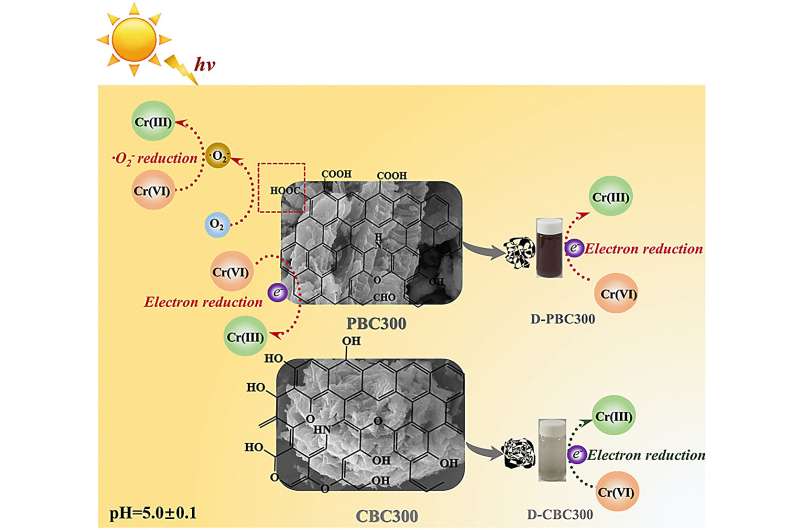This article has been reviewed according to Science X's editorial process and policies. Editors have highlighted the following attributes while ensuring the content's credibility:
fact-checked
peer-reviewed publication
trusted source
proofread
Researchers reveal different photocatalytic process of Cr(VI) on cellulose- and lignin-rich biochar

As much as 300 to 500 billion tons of biochar are reported to be in soil, sediment and aquatic habitats in China. The discovery of photocatalytic activity of biochar opens up a new frontier in understanding how this substance affects and regulates geochemical processes related to key environmental elements. However, the biomass sources and pyrolysis temperatures can significantly affect the biochar structure, leading to substantial variability.
Recently, a research team led by Prof. Fan Qiaohui from the Northwest Institute of Eco-Environment and Resources of the Chinese Academy of Sciences (CAS) has prepared a series of biochar using cellulose-rich pakchoi and lignin-rich corncobs as biomass to explore the photoreduction process of Cr(VI).
This study was published in Environmental Research.
They found that cellulosic and lignin biochar exhibited significant differences in light absorption, conductivity, photocurrent response, and energy band structure due to variability in their structural and morphological characteristics.
The photocatalytic reduction efficiency of cellulose biochar for Cr(VI) was about 1.3 times higher than that of lignin biochar. Approximately 70% of the photoactivity in cellulosic biochar was attributed to its soluble fraction, while almost 100% in lignin biochar.
Despite significant differences in soluble fractions, they dominated the photocatalytic reduction of Cr(VI) in both biochar systems.
During the photocatalytic reduction of Cr(VI), the interfacial electron transport was the key reaction pathway, but ·O2- produced in the cellulosic biochar indeed contributed somehow to the reduction of Cr(VI).
More information: Zhengyang E et al, Different photoreduction processes of Cr(VI) on cellulose-rich and lignin-rich biochar, Environmental Research (2023). DOI: 10.1016/j.envres.2023.116819
Journal information: Environmental Research
Provided by Chinese Academy of Sciences


















